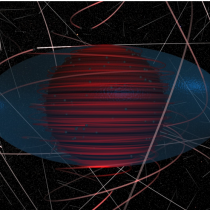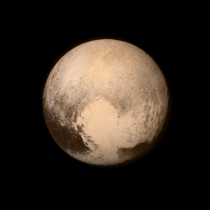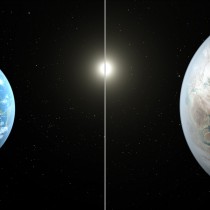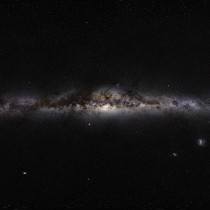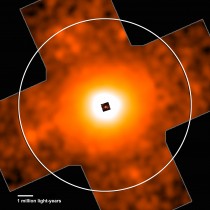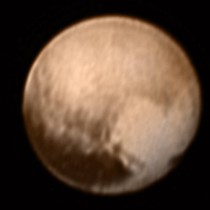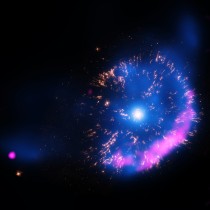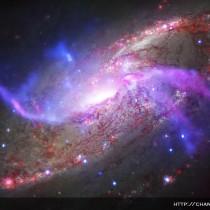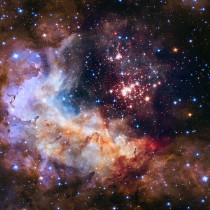Black Hole Laboratories for Dark Matter
- By Maggie Masetti
- August 5, 2015
- Comments Off on Black Hole Laboratories for Dark Matter
There is a lot we don’t know about dark matter – like what exactly it is. Because of this, we are always looking for ways to study it. It turns out that black holes might make the perfect laboratory environment for better understanding both black holes and the nature of … Continue Reading →
Pluto Redux
- By Maggie Masetti
- July 28, 2015
- Comments Off on Pluto Redux
By now, if you’re on the internet at all, (which you must be if you are reading this) you’ve seen the spectacular images of Pluto that New Horizons has sent back. It’s been so cool to see it spawn dozens of memes and to see so many people (and not … Continue Reading →
Another Earth?
- By Maggie Masetti
- July 24, 2015
- Comments Off on Another Earth?
The Kepler spacecraft just discovered the most Earth-like exoplanet yet. It’s like a bigger, older cousin to our planet. And it’s orbiting in the habitable zone of a sun-like star! Additionally there’s a good chance it could have a rocky surface and liquid water. Meet Kepler-452b: Kepler-452b is slightly larger … Continue Reading →
How Many Stars in the Milky Way?
- By Maggie Masetti
- July 22, 2015
- Comments Off on How Many Stars in the Milky Way?
Recently I was asked to help someone answer the question of how many stars are in the Milky Way – that there were differing answers out there, and which was the right one? This question turns out to have a really interesting (and possibly frustrating?) answer. And the answer is … Continue Reading →
Protecting Test Hardware to Protect Flight Hardware
- By Maggie Masetti
- July 15, 2015
- Comments Off on Protecting Test Hardware to Protect Flight Hardware
The title may seem a little circular, but this is not a story that often gets told – that is, we have to keep our test hardware clean to keep our flight hardware clean. To that end, a new NASA Goddard tech is being tested out in NASA Johnson’s giant … Continue Reading →
The Learning Curve
- By Koji Mukai
- July 10, 2015
- Comments Off on The Learning Curve
Japan has established a strong presence in X-ray astronomy ever since the successful launch of the Hakucho satellite in 1979. Hakucho was followed by Tenma (launched in 1983), Ginga (1987), ASCA (1993), and Suzaku (2005), with the last three in collaboration with international (notably US) partners. Suzaku was designed to … Continue Reading →
Pluto!
- By Maggie Masetti
- July 8, 2015
- Comments Off on Pluto!
We are finally going to get to see what Pluto looks like, thanks to the New Horizons mission, which is set for a closest approach on July 14. It’s amazing to me that as much as we know about the solar system (and indeed the Universe) that we have not … Continue Reading →
Cosmic Fireworks
- By Sara Mitchell
- July 4, 2015
- Comments Off on Cosmic Fireworks
Happy Fourth of July to those of you that celebrate it! We couldn’t let the date slip by without presenting a little display of cosmic fireworks. We think you’ll find they’re much quieter than the earthly kind. We start with this 3D visualization of the nebula Gum 29 with the … Continue Reading →
The Most Important Wavelength
- By Maggie Masetti
- June 22, 2015
- Comments Off on The Most Important Wavelength
I was recently asked whether optical telescopes were the most important kind – or if they weren’t – what the most important wavelength of light was. The answer truly is – they are all important! Most astronomical objects and phenomena emit light at more than one wavelength – so if … Continue Reading →
Happy Birthday, Hubble!
- By Maggie Masetti
- May 19, 2015
- Comments Off on Happy Birthday, Hubble!
After all our satellite birthday celebrations, we’d be remiss if we didn’t wish the Hubble Space Telescope a happy 25th! We’re a little belated, but that’s ok – it just means that our birthday wish won’t be lost amongst the millions of others on Hubble’s metaphorical Facebook wall! And of … Continue Reading →


